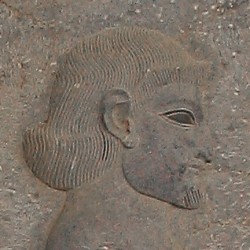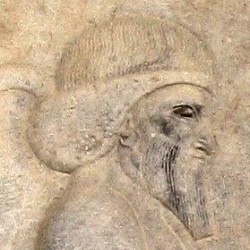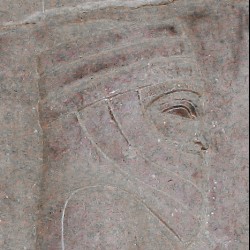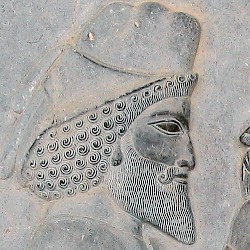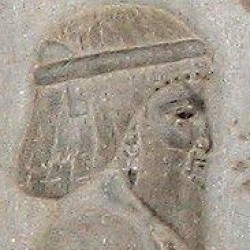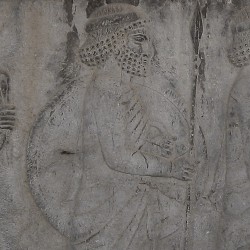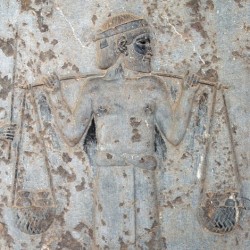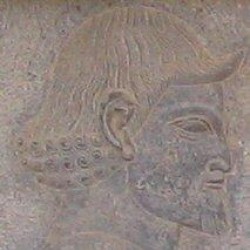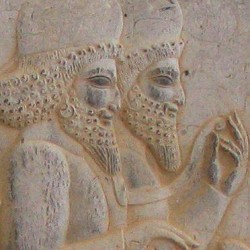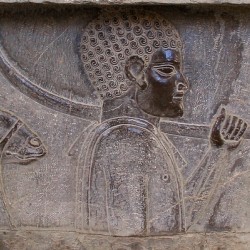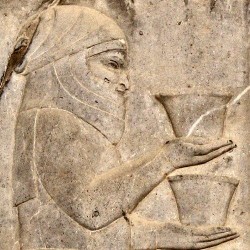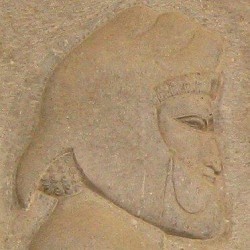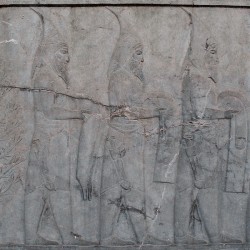Persepolis, People
Persepolis (Old Persian Pârsa, modern Takht-e Jamshid): Greek name of one of the capitals of the ancient Achaemenid Empire, founded by king Darius the Great (r.522-486 BCE). There were several satellite sites, Naqš-e Rustam and Takht-e Rustam.

The eastern stairs of the Apadana at Persepolis show a large procession of people bringing tribute to the Achaemenid king. The beautiful reliefs were designed in the last decade of the sixth century, and perhaps executed by Yaunâ artists. We are allowed to identify the king with Darius I the Great (r.522-486), but we can also say that this relief is an idealization; the king who receives the presents is not a particular ruler, but an embodiment of Persian rule. As such, it could be copied on the northern stairs.
On the wall next to the stairs, the tribute bearers are represented. It is almost a miracle that these stairs have survived the fire of Persepolis organized by Alexander the Great in 330. BCE Here are some portraits of the people living in Darius' kingdom. (The Medes are not represented on the Apadana East Stairs but on the Tripylon wall.)
